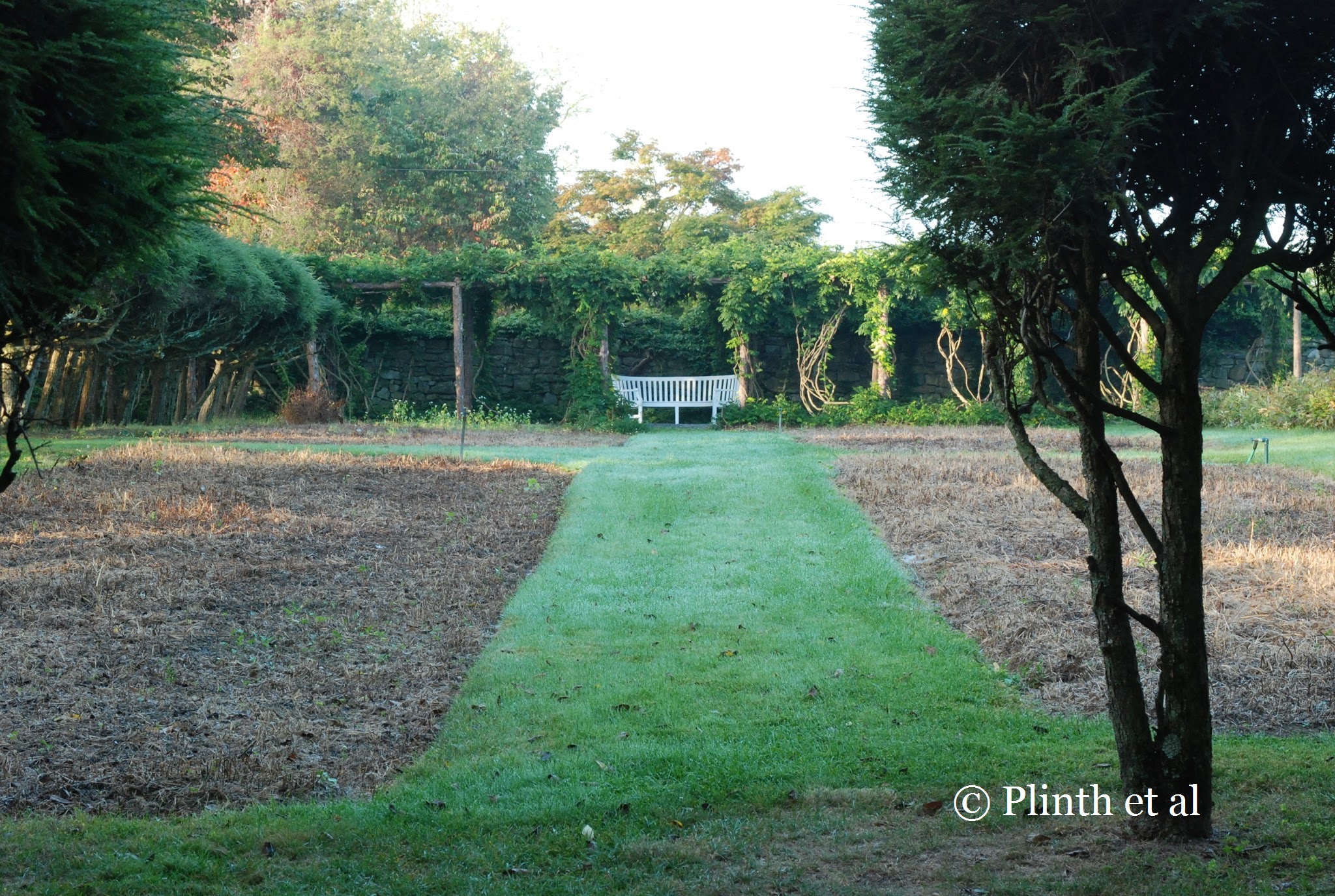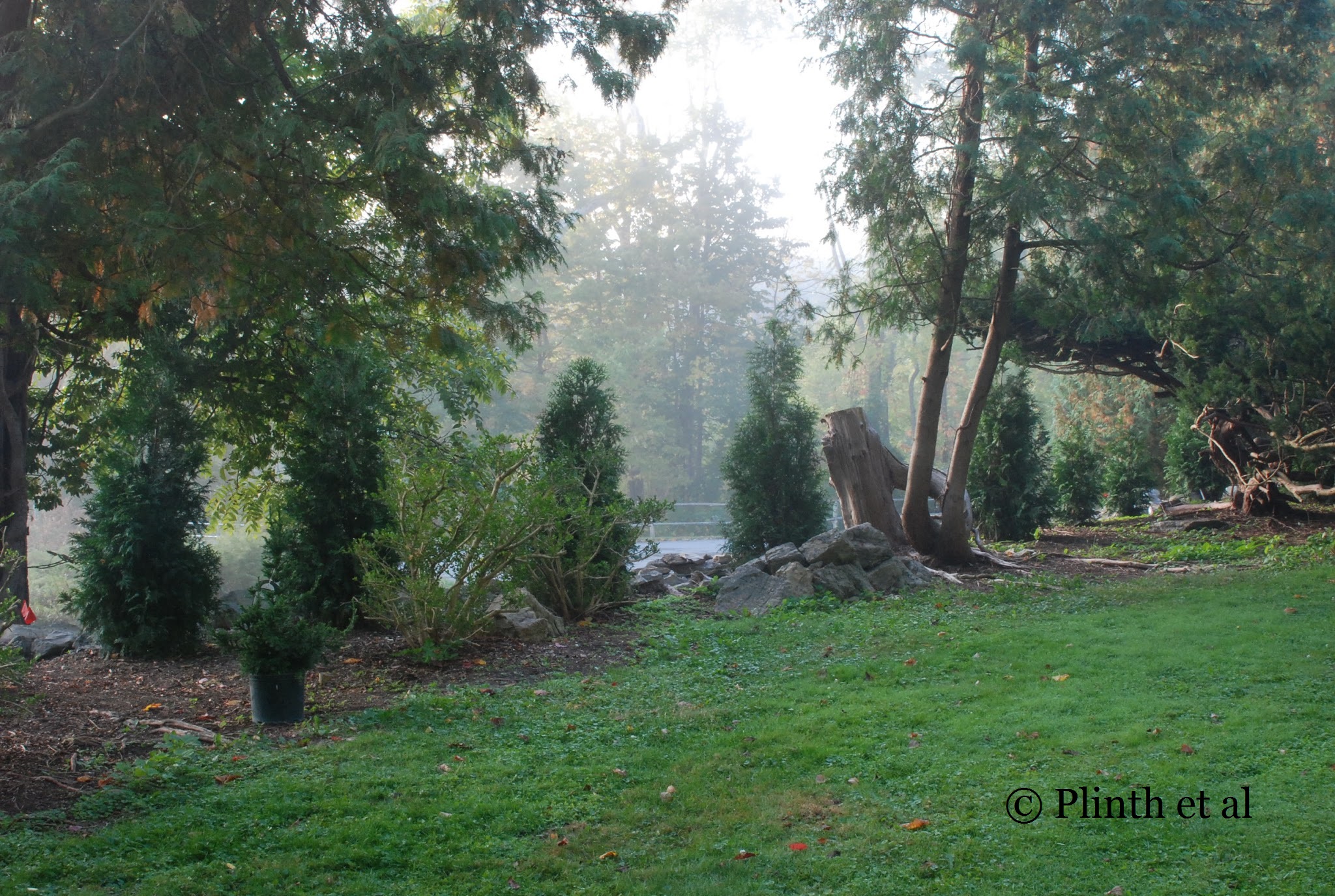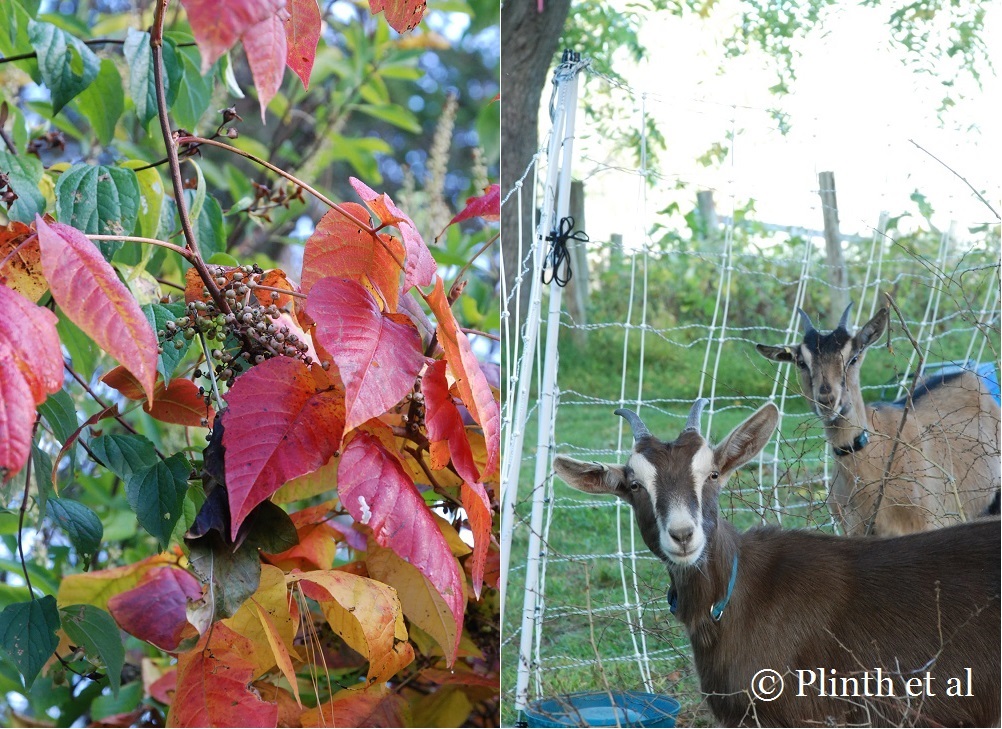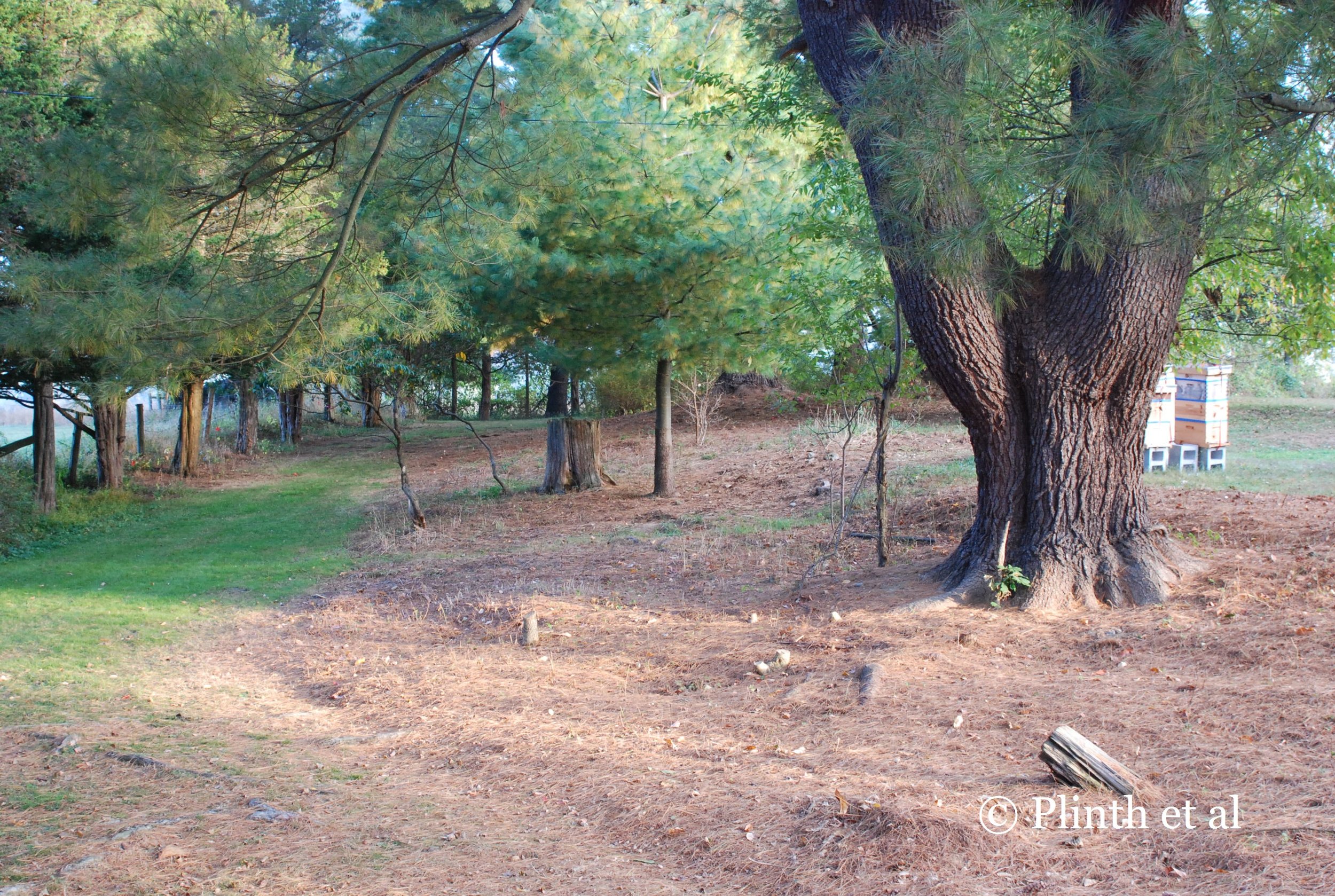Anatomy of a Garden: Meadowburn Farm
To restore a historic garden is to play the roles of archaeologist, historian, and horticulturist all at once - one must carefully recover the remnants from years of neglect and decay, understand the creator's style and philosophy, and recognize the surviving desirable plants among the weeds. It is a monumental task that Quill faced with magnanimity upon taking on Meadowburn Farm.
The bones of the garden, however illegible underneath tree roots and overgrown shrubbery, persist, and archives, the tangible documents of the creator, hopefully preserved and catalogued elsewhere. Hardy plants from an era still eke out a brave existence and may be linked to cultivars lost to cultivation. A team of eight gardeners once tended the estate under Mrs. Ely's direction; today the same responsibility falls on Quill and her small team.
The Formal Garden
Very little of Ely's original plantings survive to this day - the boxwood hedges and Catalpa standards have all, but disappeared and native goldenrods and weeds encroached where perennials and biennials petered out. The pergola has not changed, although the arches are now blurred from the rampant growth of the wisteria. However the Virginia creeper that once decorated the colonnade is gone, although it is still found in the neighboring woods.
The Evergreen Garden
The Evergreen Garden is entirely devoid of flowers for good reason - Mrs. Ely wanted to demonstrate the beauty of evergreens, particularly conifers. In the Practical Flower Garden, she wrote: "All evergreens inspire me with a feeling almost akin to worship, possibly a heathen trait which has survived generations of civilization, so that it is a great trial to me not to be able to grow the evergreen family successfully." Despite the climate Ely's perseverance led to a few of the conifers, Juniperus virginiana and Tsuga canadensis, successfully establishing and surviving neglect and deer to give the Evergreen Garden a protective enclosure of greens. However, the scale has changed - no longer do the different conifers (presumably dwarf varieties) in the left of the historic photograph exist (probably shaded out by the trees) nor does the hedge appear discernible in the right photograph. The stone terrace have lost its definition, and the fruit stone urns now are out of sight rather than flanking the steps.
Slowly step by step is the Evergreen Garden beginning to regain its former semblance during Ely's time. The misplaced Colorado blue spruce has been removed, permitting a clear view of the stone reliefs behind the fountain. On the left, fencing has been set up to confine the goats to the area in need of clearance from undergrowth.
Quill has reinstated the original Thuja hedge to screen the adjacent road. The hedge has been planted with a mixture of 'Green Giant' and 'Steeplechase' to create privacy within reasonable time.
The Stone Terrace in the Evergreen Garden
Already buckling from the tree roots, the stone terrace was initially covered with moss, grasses, and weeds that took advantage of organic debris accumulated over the years between the crevices. Quill cleaned the stone terrace of its vegetative covering and this past autumn her mother assisted with leveling the stones (no easy job that called for heavy lifting, crowbar, and spade).
The Picking Garden
The central axis of the Picking Garden is relatively unchanged prior to Quill's arrival. In 2012, the dahlias were not tied regularly and their stems heavy with flowers flailed without support. However, Meadowburn Farm was running on limited help and the gardeners, especially Walter DeVries did keep the plants going from year to year. When Quill stepped in full-time in 2013, the dahlias received greater attention and the cedar stakes are scarcely visible. In addition, the turf path was mowed and the beds were edged.
A decision was made to remove the turf pathway in favor of a gravel pathway since wear and tear from frequent foot traffic was causing turf to die back in sporadic spots. Turf maintenance then was lessened, leaving Quill and her team to concentrate their energies elsewhere. The beds also received generous amendments of compost, causing a tremendous improvement in vigor and flowering of the dahlias (plants were high as 7' tall and could be seen across the road). It enabled Quill to supply cut dahlias for florists in New York City, a source of revenue for Meadowburn.
Dating from 1917, the original 160' Thuja hedge (Thuja occidentalis 'Nigra') (far northwest corner of the photograph), which divides the Picking Garden from the Formal Garden, had lost its linear symmetry as age and bad weather decimated some plants.
In fall 2013, a new hedge replaced the old one, returning the garden a sense of structure.
Natural Weed Control at Meadowburn Farm
Unwanted weeds, especially perennial and woody ones, are sometimes difficult to eradicate in neglected gardens, and unfortunately poison ivy (Toxicodendron radicans) (in autumn glory on the left photograph) is a constant battle for Quill to remove from the garden. Anyone who has suffered from a bout of poison ivy can attest to the irritating painful rash from the plant's sap. Cue in goats who will happily devour poison ivy, and Quill brought in two young goats named Moses and Tucker (the right photograph) to rid areas infested with poison ivy, barberries, and other weeds. However, the goats will not touch Ageratina altissima (syn. Eupatorium rugosum), a white-flowering herb poisonous to livestock. Because goats eat almost indiscriminately, fencing is needed to confine them and protect the garden from being emptied of its desired ornamental plants.
The tactic of using goats as green machines is surprisingly effective when one sees the results afterwards. The photograph above shows how this slope once covered with barberries and other weeds has been cleared, saving manpower elsewhere where goats cannot be used.
Photographic Credits: Historic Photographs - Walter DeVries and B. Danforth Ely; Before Photographs - Quill Teal-Sullivan


















